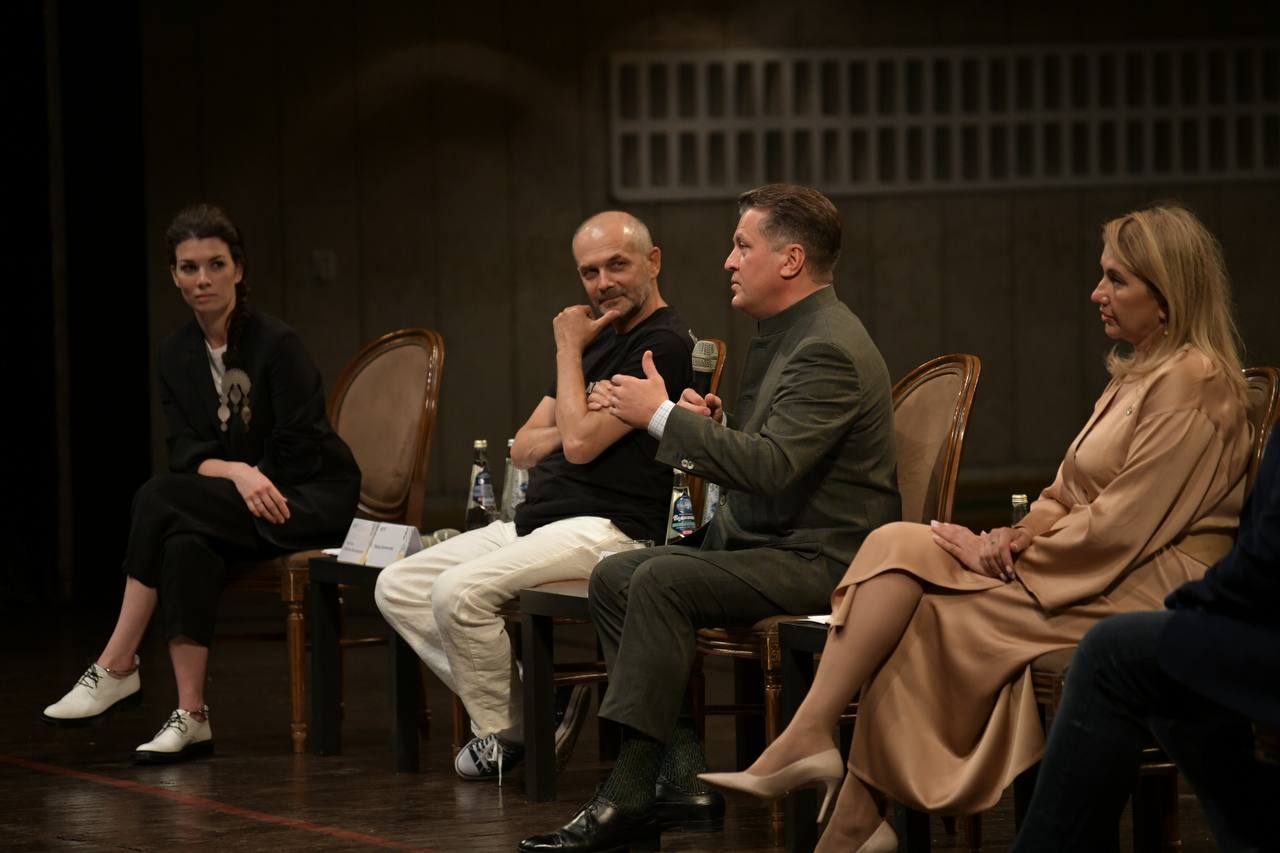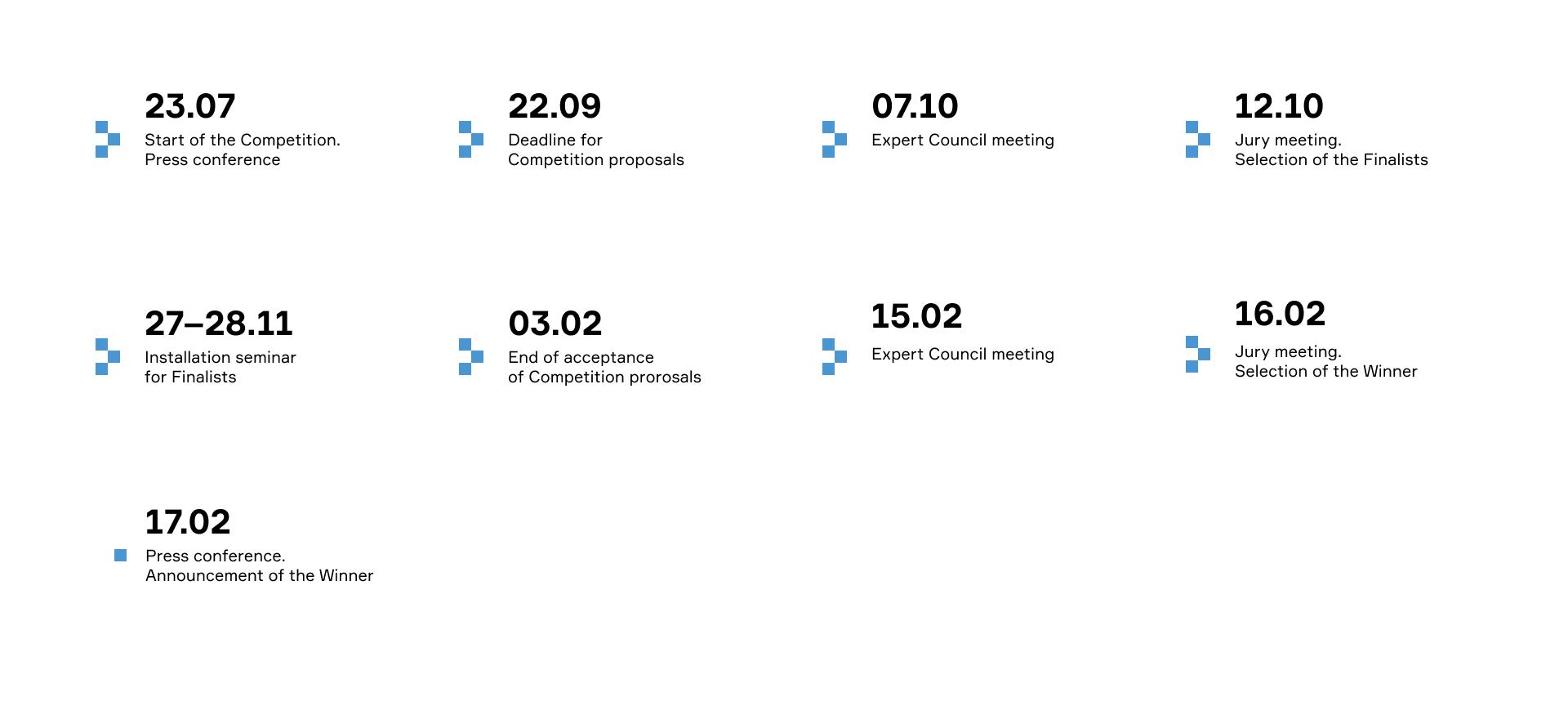
completed
The Nationwide Competition for the Development of the Social and Cultural Concept for the Development of the Territory of the Uspenskoe Estate Ensemble
Moscow Region
Search
121069, Moscow, Bolshaya Molchanovka, 21, office 14
Competition
July 23, 2021 — February 17, 2022
Kazan
The initiators of the competition are President of the Republic of Tatarstan Rustam Minnikhanov and the Galiasgar Kamal Tatarian State Academy Theatre. The Competition is supported by the Government of the Republic of Tatarstan, the Ministry of Culture of the Republic of Tatarstan, the Executive Committee of Kazan city and the Institute for Urban Development of the Republic of Tatarstan Fund. The operator of the competition is the International Urban Laboratory CENTER Lab.
The competition is held in accordance with UNESCO Recommendations related to international competitions for architecture and city development.

Aim
Objectives

Participants
Prize fund
Based on the results of the meeting of the Jury, the winner and two finalists will receive additional payment equal to following sums:
On February 15, a meeting of the Expert Council of the international competition for development of an architectural concept of Kamal Theatre took place, co-chaired by Assistant to the President of the Republic of Tatarstan Natalia Fishman-Bekmambetova and Director of the Galiasgar Kamal Tatar State Academy Theatre Ilfira Yakupova. The experts will consider the competition proposals, which will be presented in person by the finalists, and will prepare their recommendations for the jury members.
On February 16, under the chairmanship of the Mayor of Kazan, Ilsur Metshin, the final meeting of the Jury of the Open International Competition for development of an architectural concept for the Galiasgar Kamal Tatar State Academy Theatre took place.
The jury considered the Competition Proposals, which were presented in person by the Finalists. During the question and answer session, the jury had the opportunity to learn more about the details of the projects from the participants.
The winner of the Open International Competition for development of an architectural concept of Galiasgar Kamal Tatarian State Academy Theater has been determined. According to the results of voting by the members of the Jury, the Consortium headed by Wowhaus Bureau. Consortium members: Kengo Kuma & Associates (Tokyo, Japan), Werner Sobek (Stuttgart, Germany), Personal creative workshop of architect Bakulin German Alekseevich (Kazan, Russia).
The shape of the new theater is inspired by “Ice Flowers,” a rare natural phenomenon that occurs on the surface of Kaban Lake. The building blends into the environment in winter, becoming part of the appearance of the lake. In summer, with multiple reflections from its transparent facades, the theater is unified with nature. Acuteness and earnestness are characteristic features of Tatar culture, architecture, and art.
The building is designed to be a part of the topography of the place, as a park with pedestrian routes and recreational areas, integrated and continuing the existing improvement of the embankments. A shape inspired by the soul of Tatarstan: Sharp and closed outside, but soft and warm inside. The building’s lighting is meant to bring warmth into the foyer and gradually dissolve it into the triangular panels of the facade. The bright decorative panels in the interior call back to traditional Tatar crafts and create a friendly atmosphere.
2nd place – Consortium headed by Bespoke (Kazan, Russia). Consortium members: Asif Khan Studio (London, UK), Charcoalblue (London, UK), AKTII (London, UK), Atelier Ten (Glasgow, UK).
The look of the new facades is a reference to the complex, multi-layered cultural context of the Kamal Theatre. There are pieces of paper here — formerly handwritten texts of scripts for theatrical productions, now a perfect background to intensify the colors of nature. The silhouette of brick facades hides not only the image of the Kazan Kremlin and its white stone walls, but also the aesthetics of both Sufi philosophy and Soviet modernism, which strives for purity of form. Not a direct quote, but a call to discover.
The building does not suppress the existing landscape, but becomes a part of the shore of Nizhny Kaban Lake. All facades of the theater are equally important, as are the different worldviews, languages, cultural layers, and traditions within Tatar society. The only part that rises above the facades is the vertical cubic capacity of the stage box, representing a symbolic axis, the city’s cultural life.
3rd place – Consortium headed by Metropolis (Moscow, Russia). Consortium members: Coop Himmelb(l)au (Vienna, Austria), Miriada Group (Kazan, Russia).
The new Galiasgar Kamal Tatar State Academic Theatre embodies an open, consciously outwardly unstable architecture and thus reflects the idea of democracy. While the theater is aesthetically considered as a functional monument, the building itself is not a just a solid structure. It is, rather, an open space, receptive to both its surroundings and the possibilities around it.
The conceptual design of the new theater is dedicated to all visitors and to the citizens of Kazan. The new Kamal Theatre is not only a theater venue, but also a new public space that embodies architecture beyond its material incarnation. On the one hand, the theater exists in balance with the forces of nature, such as the sun, wind, water, and soil, while on the other hand, it is deeply rooted in local traditions and culture, thus becoming an ecologically oriented building and a place of cultural development.
4th place – Consortium headed by Megabudka Architectural Bureau (Moscow, Russia). Consortium members: Architect Bureau: FORM (Moscow, Russia), ZARF architects (Kazan, Russia).
The first of these layers is the landscape. The theater is located in a green area near Kaban Lake. The next layer is the ribbon of national ornaments, which reminds us of the blue shawl, the most famous production of the Kamal Theatre. In some places, the “shawl” is raised, forming entrances and the most spectacular visual connections between the interior and the park.
The experimental stage in the multipurpose hall corresponds to amethyst, which gives its owner inspiration and new ideas. The Great Hall is carnelian, a stone traditionally used as a central inlay in jewelry. In Islamic tradition, it’s believed that it protects family values. Finally, yellow chrysolite, as a symbol of leadership and wisdom, can be connected with the management block for the administration.
5th place – Consortium headed by Novikov Architectural Practice (Kazan, Russia). Consortium members: Borgos Pieper (Barcelona, Spain), Theatre Projects (Paris, France).
Theater Garden. The theater becomes a kind of replica of the famous Hanging Gardens of Generalife with its city balcony overlooking the lake. From above, the shape of the theater building resembles the outline of a leaf — a clear and memorable image for the audience. The shape and gracefulness of the theater facade facing Kaban Lake reminds one of the folds of a theater curtain or a wave of water. The simple Tatar architectural form is combined with decorative and ornate surfaces. Thus, the space of the main foyer, with three theater auditoriums looking like tea bowls with smooth surfaces, is covered with wood and brass like an unfinished picture.
The theater foyers are transformed into a town square, and the gardens become the theater grounds, with a variety of scenes and scenery inside the building and in the theater garden. The auditoriums face the lake, and the three-story Artisticheskaya Street creates interaction among visitors. A new festival plaza, Nauruz Square, appears just north of the new building. The project proposes the transformation of Khadi Taktash Street by making it predominantly pedestrian.
6th place – Consortium headed by PRIDE Creative Production Association (Moscow, Russia). Consortium members: Zaha Hadid Architects (London, UK), Atelier Ten (London, UK), Theatre Projects (London, UK).
The concept is based on parametric forms with recognizable visual elements of Tatar cultural heritage. Through the use of massive glass windows, the theater is visible from all sides. The foyer is filled with natural light, creating a smooth transition between the exterior and the interior. Five separated spaces make it possible to hold several events at the same time. In the center of the foyer, there is a restaurant with an open kitchen.
An elevated promenade is created around the theater, which gently descends to the water, and there are a berry meadow, assorted local grasses, and an amphitheater built into the landscape.
7th place – Consortium headed by Rozhdestvenka Architect Bureau (Moscow, Russia). Consortium members: BURO SMART (Sait-Petersburg/Moscow, Russia).
The new theater complex is part of an urban space with its own streets, squares, and parks. Two entrances on opposite sides of the theater are connected by a street, uniting two squares, northern and southern. Each of them has own mood and meaning: an active urbanized entrance from the south and a lyrical and contemplative one from the north. A simple order prevails in the architecture as a neutral frame, resistant to temporal changes and tolerant to any environment. The auditoriums are the unique objects, highlighted with special materials and national decorative elements.
Each of its spaces has a performative character and can be used for various plays, from the classical to the most unexpected. The theater is designed for 1,700 seats and has great options for leisure and educational functions. The physical space of the theater dissolves into the park, as almost all public areas have views of the city or the park.
8th place – Consortium headed by Kazan State University of Architecture and Civil Engineering (Kazan, Russia). Consortium members: DA! Architects (Shanghai, China), Dialog urban planning (Kazan, Russia).
The “Green Shawl” project offers a unique solution that unites a large park and the theater with fronts of Khadi Taktash and Nazarbayeva Streets. Thus, locals get their promised park on the Kaban Lake Embankment, loved by everyone, and an actively renewed Khadi Taktash Street, with an accent turnoff at the junction with Nazarbayeva Street.
The green hill does not destroy the panorama of Lake Kaban, but mimics the natural environment and reflects the natural landscape of Tatarstan with its grace and variety of vegetation A natural environment is created here, with water cascades, flowering trees and grasses, a murmuring brook, chirping birds, and buzzing insects. This is nature inspired by the entire rich culture of the Tatar people.
Website
Customer
Partners
Attachments

completed
Moscow Region

in progress
Izhevsk
Fill out the form on the website or write to us at welcome@centerlab.pro